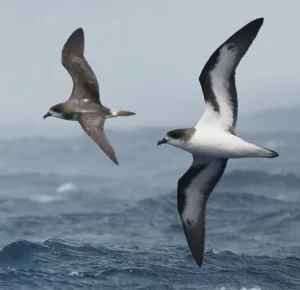The Cahow, or Bermuda Petrel (Pterodroma cahow), is an elusive and enigmatic seabird that has captured the imagination of bird enthusiasts and conservationists worldwide. Its incredible story of near-extinction and recovery highlights the importance of dedicated conservation efforts and raises awareness about the plight of endangered species. In this article, we will delve into the fascinating history, characteristics, and ongoing conservation initiatives aimed at protecting this rare and captivating bird.

A Glimpse into History: The Cahow’s Near-Extinction
The Cahow was once abundant in Bermuda, with early records from the 1500s and 1600s describing a dense population of the birds. However, the arrival of humans and the introduction of invasive species, such as rats, pigs, and cats, led to a rapid decline in their numbers. By the 1620s, it was widely believed that the Cahow had gone extinct.
In a remarkable turn of events, the bird was rediscovered in 1951 by American ornithologist Robert Cushman Murphy and Bermudian naturalist David B. Wingate. The small surviving population, found on isolated islets in Castle Harbour, provided a glimmer of hope for the species’ recovery.
The Enigmatic Seabird: Characteristics and Behavior
The Cahow is a medium-sized petrel, measuring about 35-40 cm (14-16 inches) in length with a wingspan of around 90 cm (35 inches). It has a dark grey-brown upper body, a whitish face, and a greyish-white underbelly. Its unique call, which inspired the name ‘cahow,’ is an eerie nocturnal sound that has become synonymous with the species.
As a pelagic bird, the Cahow spends most of its life at sea, only returning to land to breed. The breeding season typically begins in November, with birds laying a single egg in burrows or crevices. Both parents share incubation duties, which last for about 50-55 days. After hatching, the chick is cared for by both parents, who take turns foraging at sea to bring back food. The chick will fledge (leave the nest) after about 85-90 days.
Conservation Efforts: A Symbol of Hope
Since the rediscovery of the Cahow, numerous conservation efforts have been implemented to protect and increase its population. One key initiative has been the creation of artificial nesting sites on predator-free islands, which has helped to mitigate the impact of habitat loss and invasive species predation. Other measures include monitoring and protecting breeding sites, translocation programs, and public awareness campaigns.
Despite these ongoing efforts, the Cahow remains critically endangered, with the population numbering just a few hundred individuals. However, the species’ recovery thus far demonstrates the potential for endangered species to rebound when given proper protection and management.
Conclusion
The story of the Cahow is a testament to the resilience of nature and the power of dedicated conservation work. As we continue to learn from the Cahow’s journey, it is essential that we also apply these lessons to other endangered species, ensuring that they too have a fighting chance at survival. The Bermuda Petrel is more than just a rare seabird; it is a symbol of hope and a reminder of our responsibility to protect and preserve the Earth’s biodiversity for future generations.
For live nest cams and more information about the Cahow check out the Cornell Lab Bird Cams on YouTube.


